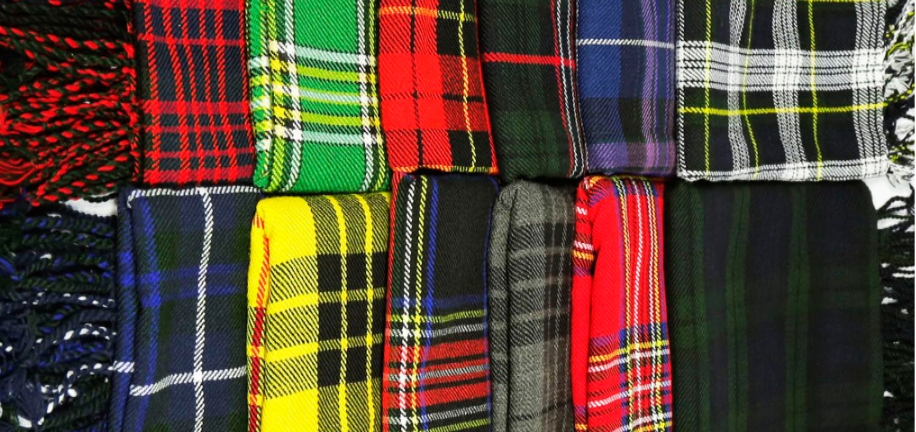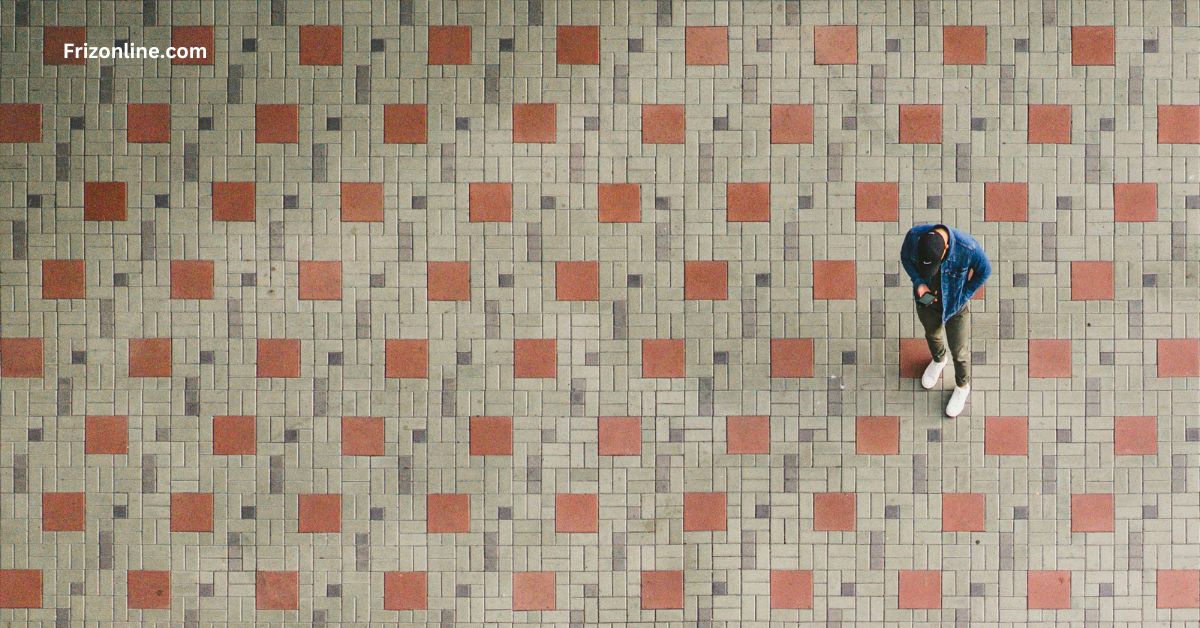Tartan is a fabric made up of crisscrossed horizontal and vertical bands in multiple colors. This iconic pattern is often associated with Scottish heritage, but its influence and use extend far beyond the borders of Scotland. Tartan is not just a simple pattern; it represents history, culture, and identity. In this comprehensive article, we will explore the different types of tartan patterns, their origins, significance, and the unique story behind County Sligo Tartan.
Understanding Tartan
To fully appreciate the variety of tartan patterns, it’s essential to understand what tartan is and its historical context. Tartan is typically woven in wool, though it can be made from other materials, and consists of a series of colored stripes that intersect at right angles, creating a distinctive checkered pattern. The particular arrangement of colors and the sequence of the stripes determine a tartan’s unique design. Historically, tartans were used to identify different clans, regions, or families, serving as a symbol of heritage and belonging. Today, tartan patterns are appreciated not only for their aesthetic appeal but also for their rich cultural significance, representing the stories and identities of various communities. The County Sligo Tartan is a prime example of how these patterns can encapsulate regional pride and history, showcasing the unique legacy of Sligo within the broader tapestry of Irish and Celtic traditions.
Origins of Tartan
Tartan has a rich history that dates back to ancient times. The earliest evidence of tartan dates to around 3000 BCE in Central Europe, but the tartan as we recognize it today is most strongly associated with Scotland. The use of tartan in Scotland can be traced back to the Roman era when soldiers documented the distinctive checkered cloth worn by the inhabitants of what is now Scotland.
Evolution and Cultural Significance
Initially, tartan patterns were associated with different regions or districts rather than clans or families. It wasn’t until the 18th century that tartan began to be closely associated with specific Scottish clans. This period saw the rise of the Highland dress, which included the belted plaid, a large piece of tartan fabric draped over the shoulder and around the body.
The cultural significance of tartan grew considerably after the Battle of Culloden in 1746. Following this defeat, the British government banned the wearing of tartan in an effort to suppress Highland culture. This ban was lifted in 1782, and by the 19th century, tartan had become a symbol of Scottish heritage and pride. The royal endorsement by Queen Victoria and Prince Albert further popularized tartan, leading to its widespread use in fashion and decor.
Types of Tartan Patterns
The diversity of tartan patterns is vast, each carrying its own unique story and significance. Tartan patterns are categorized in various ways, including by their historical use, region, clan association, and modern adaptations. Let’s explore some of the primary types of tartan patterns.
Clan Tartans
Clan tartans are the most well-known type of tartan and are associated with specific Scottish clans. Each clan has its own unique tartan pattern, often with several variations including dress, hunting, and ancient versions. Clan tartans serve as a symbol of family pride and heritage.
Examples of Clan Tartans:
- MacLeod Tartan: Known for its bright yellow and black check, the MacLeod tartan is one of the most recognizable clan tartans.
- Campbell Tartan: Featuring a dark green and blue pattern, the Campbell tartan is another iconic design, often referred to as “Black Watch” tartan due to its use by the Black Watch regiment.
- Fraser Tartan: This tartan is characterized by its red and green check with white and black accents.
District Tartans
District tartans are associated with specific regions or districts in Scotland rather than clans. These patterns often reflect the geographical and cultural heritage of the area.
Examples of District Tartans:
- Aberdeen Tartan: Featuring shades of red, green, and yellow, the Aberdeen tartan represents the city of Aberdeen.
- Isle of Skye Tartan: This tartan includes soft hues of purple, green, and blue, reflecting the natural beauty of the Isle of Skye.
- Edinburgh Tartan: Incorporating shades of green, blue, and white, the Edinburgh tartan symbolizes Scotland’s capital city.
Military Tartans
Military tartans are patterns associated with Scottish regiments in the British Army. These tartans often hold historical significance and are worn by members of the regiment.
Examples of Military Tartans:
- Black Watch Tartan: Originally known as the Campbell tartan, this dark green and blue pattern is worn by the Royal Regiment of Scotland.
- Gordon Tartan: This tartan, featuring yellow and green checks with black accents, is associated with the Gordon Highlanders regiment.
- Seaforth Highlanders Tartan: Known for its unique combination of red, blue, and green, this tartan represents the Seaforth Highlanders regiment.
Royal Tartans
Royal tartans are patterns associated with the British royal family. These tartans are often exclusive and carry a sense of prestige.
Examples of Royal Tartans:
- Royal Stewart Tartan: Perhaps the most famous tartan, the Royal Stewart tartan is characterized by its red base with green, blue, and yellow stripes. It is the personal tartan of Queen Elizabeth II.
- Balmoral Tartan: Designed by Prince Albert, this grey tartan with red and black accents is reserved exclusively for the British royal family.
Fashion Tartans
In recent years, tartan has become a popular fashion element. Designers often create new tartan patterns that are not associated with any specific clan or region but are used for their aesthetic appeal.
Examples of Fashion Tartans:
- Burberry Tartan: The Burberry tartan, also known as the Burberry check, is a beige tartan with black, white, and red stripes. It is a hallmark of the Burberry brand.
- Vivienne Westwood Tartan: Renowned fashion designer Vivienne Westwood often incorporates tartan into her collections, creating contemporary and edgy interpretations of traditional patterns.
Corporate and Organizational Tartans
Corporate and organizational tartans are designed to represent the identity and heritage of the entities they symbolize. Examples include the Scottish Parliament Tartan, featuring colors that represent the Scottish Parliament and used in various official capacities, and the Coca-Cola Tartan, which incorporates the brand’s signature red and white colors for promotional purposes. These tartans help entities visually express their unique identities and connect with their audiences.
Commemorative Tartans
Commemorative tartans are created to mark special events or anniversaries, often featuring symbolic colors and patterns that reflect the occasion they celebrate. Examples include the Millennium Tartan, designed to celebrate the turn of the millennium with colors representing hope and renewal, and the Scottish Diaspora Tartan, which honors Scots who have emigrated around the world, featuring colors that symbolize the Scottish landscape and heritage. These tartans serve as meaningful reminders of significant events and cultural connections.
County Sligo Tartan
The County Sligo Tartan stands out as a vivid representation of Irish heritage, blending traditional craftsmanship with regional pride. While tartan patterns are often associated with Scotland, Ireland has cultivated its own distinctive tartan tradition, each pattern woven with rich stories and cultural significance. The County Sligo Tartan, in particular, encapsulates the essence of Sligo, reflecting its lush landscapes and historical depth. The tartan’s colors and design elements are meticulously chosen to symbolize the county’s natural beauty and cultural heritage. This unique tartan not only honors the past but also brings a sense of identity and pride to those with connections to Sligo. Embracing the County Sligo Tartan means celebrating a piece of Ireland’s diverse tapestry, illustrating how tartans can transcend borders and serve as symbols of regional identity and heritage.
Design and Colors
The County Sligo Tartan features a harmonious blend of colors that reflect the natural beauty and cultural richness of the area. Key colors in the tartan include green, representing the lush landscapes and rolling hills of Sligo; blue, symbolizing the Atlantic Ocean and the many lakes and rivers in the region; gold, reflecting the historical significance and cultural wealth of County Sligo; and white, denoting peace and the purity of the natural environment. This thoughtful combination of colors makes the County Sligo Tartan a visually appealing and meaningful representation of the region.
Significance and Uses
The County Sligo Tartan serves as a symbol of pride for those with roots in Sligo, acting as a connection to the past and a celebration of the county’s unique identity. It is used in various forms, including clothing like kilts, scarves, and ties, allowing individuals to wear their heritage with pride. Additionally, the tartan features in home decor items such as blankets and cushions, bringing a touch of Sligo’s beauty into homes. It is also employed in ceremonial contexts, such as weddings and cultural events, to highlight the connection to County Sligo.
Conclusion
Tartan is a fascinating and multifaceted fabric that carries deep cultural and historical significance. From clan tartans to district and military patterns, tartan serves as a powerful symbol of identity and heritage. The County Sligo Tartan exemplifies how tartan can represent not just Scottish but also Irish heritage, celebrating the unique beauty and culture of County Sligo. As we have explored, the variety of tartan patterns is vast, each with its own story and significance. Whether worn as a symbol of family pride, regional heritage, or personal style, tartan continues to be a beloved and enduring part of our cultural fabric.











